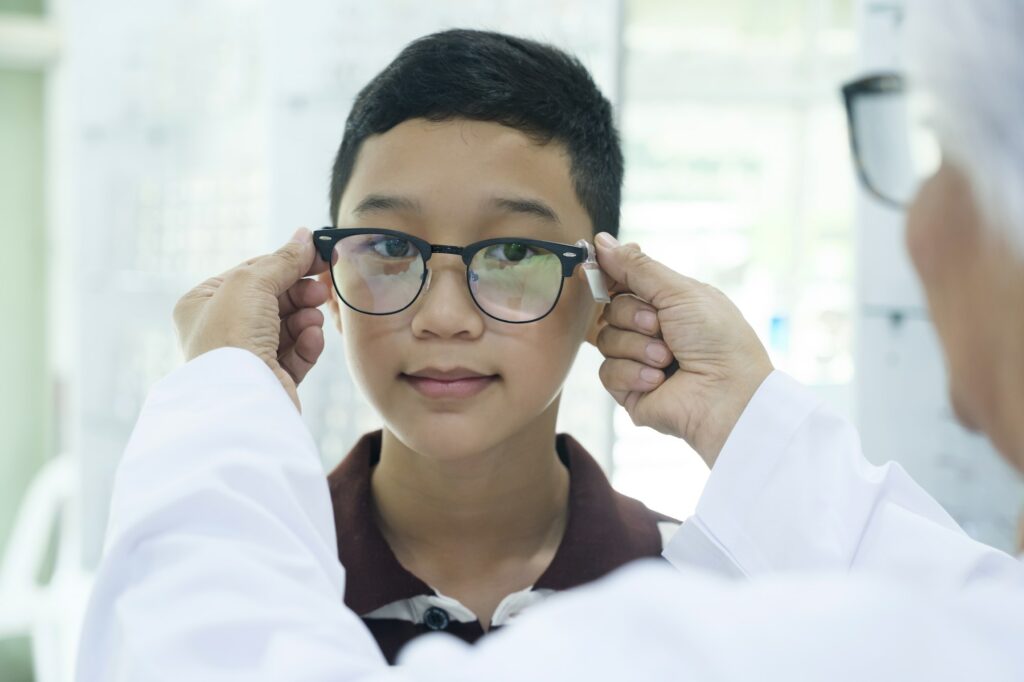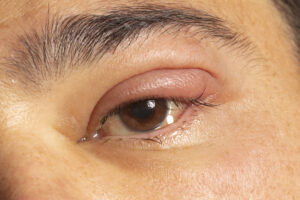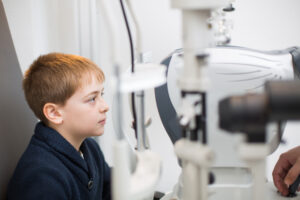This unique technology corrects refraction problems in the central optical zone and aids in the management of myopia development. Myopia is when you can only see things up close, but distant objects are hazy. MiyoSmart lenses ensure that light enters the eye and concentrates appropriately on the retina, delivering sharp, clear distance vision. Light focusing correctly on the retina is a powerful signal to the eye to slow down its growth, which reduces myopia progression.
MiyoSmart lenses for adolescents
MiyoSmart lenses are ideal for active youngsters since they are composed of polycarbonate, a material that is not only very impact resistant, light, and thin, but also provides excellent UV protection.
Children are more prone than adults to damage eyeglasses and spectacle lenses.Thus, it is critical that frames and lenses chosen for children are up to the task, fit well, and are robust to avoid eye harm from, say, a football to the face. Children are also more vulnerable to the effects of UV radiation on the eye, with around 80% of lifetime UV-in-the-eye exposure occurring before the age of 18. This is because a child’s cornea, crystalline lens, and vitreous are extremely clean, allowing more light into the eye.
This, along with children’s more agile pupils, which allow more light to enter the eye, and the fact that children spend more time outside than adults, means that children’s lenses must provide appropriate UV protection to avoid future issues such as cataracts and age-related maculopathy. MiyoSmart lenses offer excellent UV protection, as well as impact prevention.
The appearance of MiyoSmart Lenses
MiyoSmart lenses look totally average on first look. However, depending on the angle of the lens reflection, you can see the small lens segments and their unique honeycomb shape. When you look at the lenses from the side at a steeper angle, you’ll notice the modified lens design.
Since kids can be self-conscious of looking different than their classmates, MiyoSmart lenses are designed to not appear significantly different than regular single vision lenses. Even specialists can have difficulty distinguishing between conventional and MiyoSmart lenses when installed into a frame.
Aesthetically, a MiyoSmart lens is less noticeably different than a bifocal lens (which has a defined line at the bottom portion of the lens). Bifocal lenses are sometimes also used to treat childhood myopia.
Some eye professionals argue that kids can also use special progressive lenses to delay the growth of myopia. However, MiyoSmart glasses give a 4-5x larger field of vision when the wearer is reading, which is greatly beneficial for children. Furthermore, investigations revealed that progressive lenses were less successful at slowing down myopia than MiyoSmart lenses.
Wondering if MiyoSmart lenses would be a good choice for your child’s myopia? Book a kid’s exam with us!








